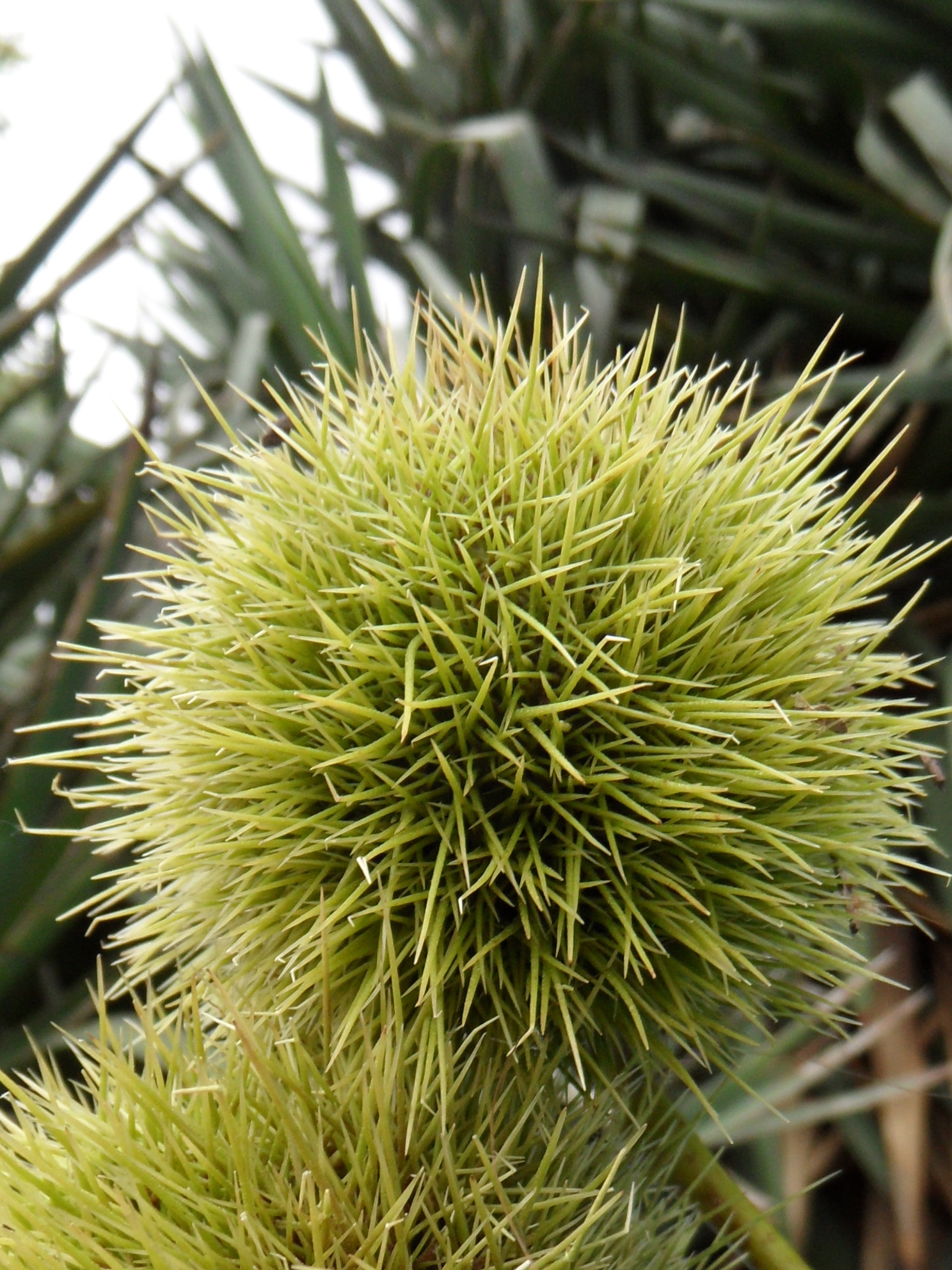
A broad and domed tree to 20 m or more tall. Bark with spiralling fissures. Young branchlets reddish-brown, hairy at first. Leaves oblong-lanceolate, 12-20 cm long, 5-8 cm wide with mostly 20-24 pairs of veins, each ending in a tooth, dark glossy green above with star-shaped hairs below at first; colouring yellow in autumn. Flowers in spring. Male catkins pale green, to 10 cm long, appearing first. Female catkins appearing after the male catkins and and much shorter. Fruit in a prickly envelope 5-8 cm wide and containing 2-3 edible nuts; mostly Mar-Apr.
S Europe, W Asia, N Africa
In Australia the chestnut was an early introduction probably planted in some quantity at the time of the gold rush (1850-60). Early plantings may be seen in NE Victoria and E Gippsland. Only since World War II have chestnuts been commercially produced in Australia, with plantings gaining great momentum in the 1970s. Perhaps the largest current plantation is that of the Australian Chestnut Producers Ltd in the Buckland Valley, Mt Buffalo, although other areas in Victoria include commercial growers operating from the Dandenongs, Bright and Beechworth, the Otways and Ballarat. There is production in New South Wales in the Blue Mountains and Batlow; also in Tasmania, SW Western Australia and the Adelaide Hills. As chestnuts are self-sterile it is necessary to plant cross-pollinating cultivars together. Various commercial cultivars have been selected for their size, flavour when roasted or cooked, and early or late season maturity. Australian raised cultivars include: 'Buffalo Queen' from Porepunkah in the Ovens Valley, also 'Emerald Gem' (a selection made by Grandview Nursery), 'Fleming's Mahogany', 'Fleming's Prolific', 'Fleming's Reliance' and 'Fleming's Special'. 'Sword' originated from Stanley in NE Victoria, 'Black Beauty' from a tree planted on Mr H. Down's property at The Patch, Dandenongs, Victoria and 'Davis' is another selection from The Patch. Other Dandenong selections are 'April Gold' and 'George Sands'.
Fresh nuts; cultivars by grafting.
Timber valuable, fine-grained. The nuts are commercial chestnuts, generally roasted or converted to a flour for cooking, or candied as the French delicacy marrons glacé.
Spiralling bark fissures and prickly-husked nuts (the leaves, though large are hardly different from those of large-leaved Quercus acutissima).
ACT: Entrance to Government House grounds. NSW: Katoomba (Linfels Park); Mt Tomah (Blue Mountains Botanic Garden Mount Tomah); Mt Wilson ('Windy Ridge', 'Yengo'). VIC: Daylesford (Castlemaine Rd); Emerald (Emerald Lake Park, many); Mt Macedon ('Alton', the tallest in state); Sassafras (street trees); Wandin (Hunter Rd near Beenak Rd, 102 years old and 20 m tall in 1993). TAS: Wynyard (Spencer Hospital).
C. dentata (Marsh.) Borkh. from E North America is occasionally offered; it has leaves hairless at all times with more than 20 vein pairs and pointed (not bristled) teeth.
Source: (1997). Fagaceae. In: . Horticultural Flora of South-eastern Australia. Volume 2. Flowering plants. Dicotyledons. Part 1. The identification of garden and cultivated plants. University of New South Wales Press.

Castanea sativa 'Albomarginata'
Variegated Chestnut. Leaves with margin white variegated, sometimes deformed and narrow or cut to midrib. Originated c. 1864. ['Argenteovariegata']
An unstable cultivar often reverting to green.
Vic: Mt Macedon (Taylor & Sangster's Nursery site); Daylesford (Wombat Park, 13.8 m tall, 21 m wide, 1987).
Castanea sativa 'Aureomarginata'
Leaves similar to 'Albomarginata' but more creamy yellow, possibly the same clone.
Until c. 1989 the trees at Mt Macedon were the only ones known in Victoria but recently have been propagated and released through the trade.
Vic: Mt Macedon (Taylor & Sangster Nursery site).